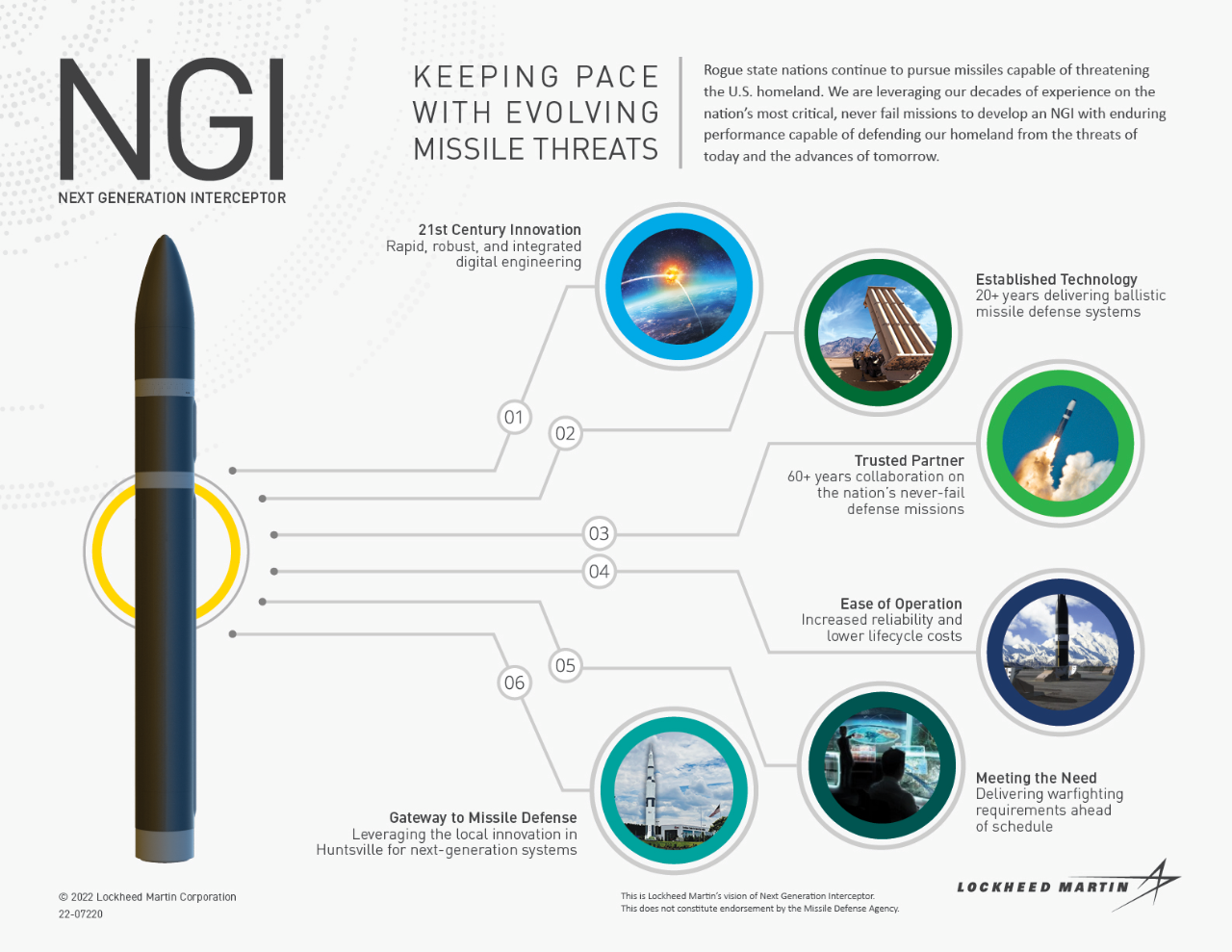In October, North Korea held a military parade in Pyongyang that showcased the nation’s long-range weapons. Among the centerpieces was a huge new intercontinental ballistic missile (ICBM), carried on a truck with 11 axles. If operable, the “monster” missile, as several analysts described it, would be one of the world’s largest ICBMs, capable of carrying multiple nuclear warheads to the U.S. homeland.
Protecting the homeland with a modern, never-fail weapon system against the increasing and evolving threats from rogue nations like North Korea and Iran is the goal of the Next Generation Interceptor (NGI).
U.S. Northern Command (USNORTHCOM) and the Missile Defense Agency (MDA) recognize that these growing threats must be met with a 24/7/365 reliable system that is not only capable of meeting current defensive needs but is also agile enough to adapt to any future threats.

NGI is a new, state-of-the-art system that provides comprehensive, dependable first line of defense. Establishing a never-fail defense as the threat from ICBMs grows and evolves requires new and adaptable technology – one that will provide a unique combination of strategic systems, hit-to-kill and national security space domain expertise.
NGI protects the continental United States as well as Alaska and Hawaii. The new interceptor will be able to target and destroy multiple threats originating from a single missile, rather than relying on multiple interceptors to target each individual object.
Lockheed Martin is uniquely qualified to lead the way in designing, integrating and testing a modernized NGI program for the GMD. NGI achieves these capabilities with 21st-century innovations like Multiple Kill Vehicle technologies, digital engineering, and DevSecOps. Other advances such as artificial intelligence, machine learning, big data analytics, and 3-D printing position Lockheed Martin to accelerate the production schedule for NGI and deliver the system to MDA and the warfighter ahead of USNORTHCOM’s targeted fielding date of late 2028.
Lockheed Martin is also leveraging its expertise and proficiency gained from its other strategic and missile defense systems, including Terminal High Altitude Area Defense (THAAD) and Hypersonic Strike, as well as its heritage of building spacecraft that can withstand the harsh radiation environment of space. Lockheed Martin is offering an interceptor designed from the ground up as an all-up-round to address all elements of environmental survivability from day one.
NGI plays a pivotal role in in a layered defense approach that adds THAAD and Aegis Ballistic Missile Defense as a second line of defense against incoming missiles in their terminal phase. This layered approach increases reliability, resiliency and overall system effectiveness, acts as a deterrent to adversaries, and allows the U.S. leaders to operate from a position of strength.
Developing and fielding this layered approach with NGI as the prime line of defense offers the U.S. homeland the security it needs now and in the future. Lockheed Martin’s 21st-century technologies and record of delivering on never-fail missions will modernize our nation’s missile defense program in the face of the ever-increasing threat from rogue nations.
MDA is expected to make up to two contract awards in February 2021.




